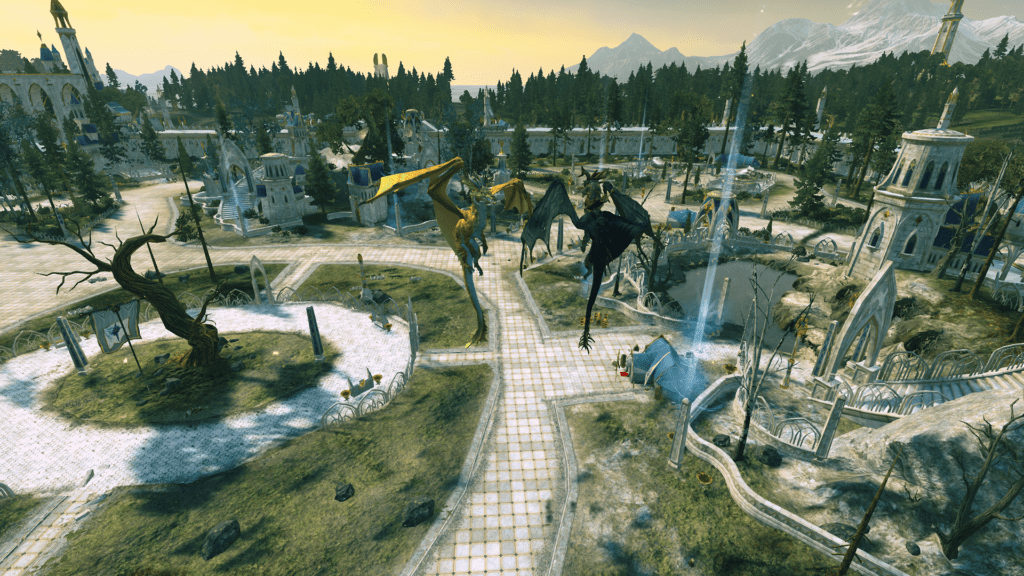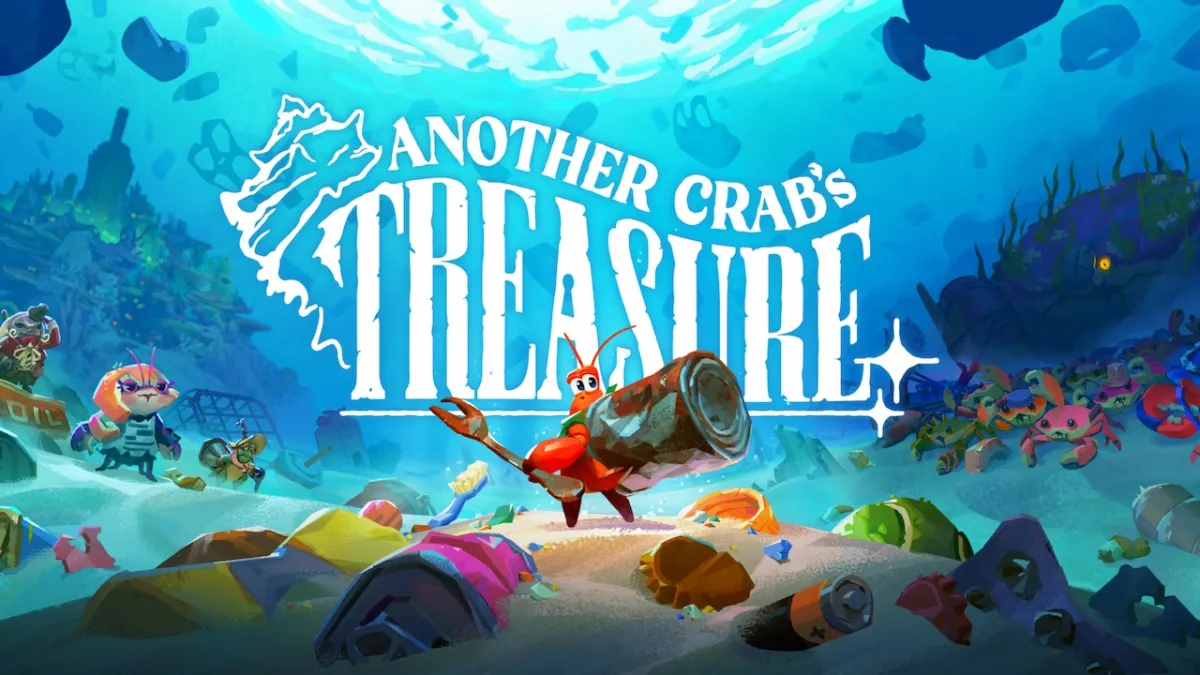Sixteen months after the launch of Total War: Warhammer, Creative Assembly have developed and released a second entry that’s both conventional stand-alone sequel, and a significant expansion towards a planned trilogy of combined titles. Total War: Warhammer 2 will, ultimately, hook up with the first game and all of its factions for a ‘Mortal Empires’ campaign that will span (a version of) the Old and New Worlds. For now though it is a stand-alone follow-up, with four new factions and plenty of applied lessons from the past year-and-some spent on the series.
Players who closely followed the first Total Warhammer and its steady flow of paid and free DLC will know that Creative Assembly leaned heavily into the idea of faction diversity. Some of the mechanics that were technically unique at launch, weaker stuff like the Empire’s political offices, were eclipsed by later additions like Bretonnia’s peasant economy or Norsca’s monster hunt quests. That confident approach to merging lore and flavour with the moving parts of a strategy game has continued in Total War: Warhammer 2, which pushes the factional distinctions even further with its four races.
The vast majority of my time has been spent in command of Malekith’s torture-happy Dark Elves, so I’ll be using them as the bulk of my examples. That’s no slight on the other three (Lizardmen, Skaven, High Elves), who from what I’ve experienced have just as many specialties of their own. Total War: Warhammer 2’s main campaign is much longer than Warhammer’s, so I made the choice to primarily relive my teenaged tabletop years with the Dark Elves. Except without Games Workshop charging me a tenner for every new bolt thrower.
Dark Elves are sadistic types, led by a guy who once had a reasonable claim to the High Elf throne but has long since torpedoed his eligibility by embracing murder, slavery, goth rock, and a thoroughly weird relationship with his mum. When a Dark Elf army chooses to take captives after a battle those prisoners show up as a resource and start to generate income, instead of just vanishing to some invisible slave mill.
Having captives show up as a tangible number (that’s just for Dark Elves, the other factions have their own special mechanics), affects several of the strategic choices a player will be making. Certain building chains and technology choices tie directly into the slave economy. Public order will also be affected if cities get absurdly packed with captives, and, unless this was a review build oversight, the Dark Elves can’t quell public dissent by ceasing to collect taxes. That toggle doesn’t exist. Perhaps because, where Dark Elves are concerned, ‘taxes’ are a euphemism for ‘keeping a few people wealthy by working prisoners to death’.
Slaves are also the grim currency by which the Dark Elf faction pays for a new, universal mechanical addition to Total War: Warhammer 2; Rites. They love a good mass sacrifice.
For the low low price of a few (okay, a lot of) souls, Rites will provide a temporary faction-wide buff. The Dark Elves have a public order one, a sorcery one, and an appeal to Khaine which both boosts critical troop stats and results in more post-battle loot. Best of all though, they can use Rites to summon a Black Ark.
Black Arks are fortress cities carried on the backs of huge sea creatures, and are unique to Dark Elves. They act like mobile, sea-bound settlements; able to construct a subset of the main Dark Elf buildings, and recruit armies. Park them off the coast, and nearby armies can also recruit troops from them. That, and their bombardment support in battles, make Black Arks a pretty invaluable support unit for any invasion jaunts abroad.
Dark Elves also share a loyalty mechanic with the Skaven. This appends a numerical level of trust to the hired lords beneath your faction leader, which fluctuates according to your actions. If a ‘lower’ lord rises to a higher level than your Legendary Lord, their loyalty can nose-dive (giving them items can appease them a little, but I found keeping the Legendary Lord active and at a higher level was the most reliable defense against rebellion). So ended the brief coup of Nelosi Lifequencher, who rose in stature when sweeping the forces of Chaos from Naggaroth, got far too ambitious, and was smashed in battle by the Witch King.
That makes for a fun anecdote, but loyalty is a Total War: Warhammer 2 mechanic that may not age as well as others. I think it should be fairly straightforward to avoid once players figure out exactly what drives the changes. It does fit the factional theme though, and may still crop up if you’re forced to recruit a low loyalty general in a crisis situation. Skaven give it an interesting twist by having Queek hate Grey Seers, making them a riskier loyalty choice by default.
Again, those are just the unique (and one shared, in the case of loyalty) mechanics for one faction. High Elves have a whole diplomacy game going for them, where they use an Influence resource to push other factions into alliances or conflicts. The Skaven have semi-hidden cities that look like ruins, and a Food resource that (when abundant) can help boost newly founded settlements. Finally, the Lizardmen get a mysterious ‘Geomantic Web’ that gives bonuses to linked cities, and, of course, lots of potentially angry dinosaurs.
Other factions from the first Total War: Warhammer are plentiful in number too. AI groups of Chaos, Norsca (the old version, I suspect new-Norsca will be patched in), Greenskins, a whole coast of Vampires, and various Imperial off-shoots are all present across the three main land-masses of the New World.
The point of focus animating everybody among the Big Four is the High Elf Vortex, situated in their homeland of Ulthuan. Think of it as a giant over-spill drain for Chaos, preventing demons entering the Warhammer world even more often than they do already. Everybody wants it for some noble or nefarious purpose, and a sequence of five rituals is required in order to fulfill that desire. Those rituals require special resources, generated by each owned settlement, completed quests, and (in far greater volume) by settlements of particular magical significance; places like Ghrond, The Altar of Khaine, or Vaul’s Anvil(s).
As a slight aside here, I love how much detail Total War: Warhammer 2 has included with unique building options. All the Dark Elf capitals have at least one special construction (things like Hellebron’s Palace at Har Ganeth), with appropriate properties and bonuses for the region. I presume this is the case for the other three factions as well. It’s lovely stuff for great big nerds like myself.
The Vortex campaign route is technically optional, since total conquest is still available as a path to victory. It involves eliminating all seven (two Legendary Lords for each race) main rival factions and holding fifty(!) provinces though, so I think you’d have to forego the final Vortex ritual on purpose to get anywhere near that. All regions can be conquered in Total War: Warhammer 2 (a change from the more restrictive first game), but there are major penalties for settling in places that have an inhospitable climate. Building costs skyrocket, and casualty replenishment basically ceases to exist.
In an escalation of Total War: Warhammer’s central Chaos incursion, a handful of Chaos stacks show up at your door like aggressive salesmen every time your faction starts a ritual. I suspect this could be Creative Assembly’s compromise solution to what otherwise remains (on mid-tier Hard difficulty) a pretty timid campaign AI. It kind of works, too; Chaos assaults actually gave me a defensive siege battle or two to play. Practically unheard of in the first Warhammer. That mostly reminded me that the battle AI isn’t too smart when it comes to avoiding being shot to pieces during sieges, but hey, I’ll take it.
Outside of those beeline ritual attacks you’ll still need to apply ambush stance tactics or dangle a weaker force near the campaign AI to really get it to bite. I’m sure there’ll be a mod to make the AI go for fights where the auto-resolve is lower than 70-30 about five minutes after Total War: Warhammer 2 launches, but why Creative Assembly won’t make it at least a little bolder I don’t know.
On a happier note, the number of Hero agents employed by the AI seems dramatically reduced. Twenty-some hours in, I’ve seen factions using one or two at most. No utterly bonkers unit composition either, though I have seen an all-harpy Morathi army image floating around so maybe I just got lucky there.
As noted, the Vortex campaign (and a larger map) makes Warhammer 2 much lengthier than the first title. Accounting for unfamiliarity with the newer systems, I think it’ll work out just over twice as long. At the point where you could easily be finishing a Warhammer campaign (100 turns or so), you’ll probably be around the third ritual.
The five ritual steps effectively coincide with a faction’s expected goals. By the first ritual, you should have conquered your local provinces. Around the second and third you should be in control of your starting region. Then from the third onwards (which opens up the world by putting all ports in diplomatic contact with one another) it’s time for more adventures abroad to tackle your major rivals. The Vortex structure provides a sense of underlying urgency and forces some long-term planning. If you need to send armies to disrupt the Lizardmen they may end up stranded in distant Lustria while you begin a ritual, leaving you to face down Chaos with the home guard.
I’m relatively confident that the AI in Total War: Warhammer 2 are playing with roughly the same ‘rules’ regarding the Vortex (albeit with some behind the scenes boosts on higher difficulties, I’m sure). In my main campaign, somebody smashed both Skaven factions quite early on, and they struggled to ever recover the pace. High Elves, meanwhile, sped up towards their ritual goals as they grew in power. Until I popped over to Ulthuan to say hello, anyway.
There’s also a way to act against ongoing rival rituals at a distance. Money (up to 10k) can be spent on Intervention Armies, which spawn an AI controlled force near the enemy ritual site as a disturbance. I’m not entirely convinced by this mechanic. It feels a little bit like a late-in-the-day realisation that players might need a desperate method of preventing a late-game surge by an AI power. Given the size of the map, something like this is probably necessary, but I’d prefer a more lore-friendly solution (hiring a large guild of Dark Elf assassins or whatever).
My record with Intervention Armies has not been great. A 10k one wandered around Ulthuan studiously avoiding the ritual sites until Tyrion and some friends came to destroy it. An earlier game 5k group were immediately rolled over by Mazdamundi. Lots of money well spent, there.
I’ve got pretty deep into this review without mentioning the actual battles themselves. That’s because they haven’t changed a vast amount. Nor did they really need to, because Total War: Warhammer’s pitched battles (thanks to pretty solid AI and widespread unit variety) were its strongest feature.
The most immediate additions are cosmetic, providing more variety in climate-specific battlefields with elaborate backdrops. You’ll now see the outskirts of a High Elf settlement, or distant Lizardmen temples with cascading waterfalls. Not much in the way of added tactical value, but brilliant for instilling the feeling that your Dark Elf invasion force is an awful long way from the snow-swept hills of Naggaroth.
On the more tactical side, choke point battles from previous Total War titles make their return. Different landscapes also provide more slopes and valleys than before. Dragons now have breath attacks. Provinces sometimes grant special battlefield abilities (Naggarond has ‘Lure of the Pale Lady’ that can halt units in their tracks, setting up a perfect target for Blade Wind). And Ulthuan get some fancier siege maps at the gateways to their nation.
The Total War: Warhammer 2 battle AI feels broadly similar to the first game, with the obvious addition of teaching it how to handle the newer units. It’s still fully capable of launching a co-ordinated charge, sneaking skirmishers around to harass your flanks or war machines, and able to boil your piss with how well it micro-manages ranged, mounted units. You’ll witness mighty Stegadons wading into hordes of ever-rallying Skaven, and High Elf spearmen holding the line against frenzied (and extremely buff) Witch Elves. The voice acting is also very enjoyable. It’ll be a while before I get tired of hearing a unit of Dark Elf spearmen cheerily announce themselves as “the merciless host!”
How this new set of factions will square up in multiplayer is up in the air until release. As someone with pre-release code, I’ve not had chance yet to dabble in either the returning modes from Warhammer or the new ‘Free for All’ four-way madness. At a guess, it’ll probably launch with some weird meta-level play like the first game’s ‘kill the general at all costs,’ then calm down after a bit of data-gathering and patching. That’s just speculation at this stage though.
There are a few more quality of life and campaign features that I want to touch on too. The traits system (basically a continuation from the Bretonnia DLC) is now terrific, rewarding your characters with suitable perks according to their actions. No more Dwarf Lords with a weird love of Greenskins. Legendary Lords can now level all the way to 40, reflecting the longer campaign. And their skill arrays reflect the things Creative Assembly learned during the first game; there look to be far fewer duff choices.
UI changes dotted throughout are all welcome as well. You have a lot more control over what is shown during an End Turn phase, and can fully customise pre-End Turn reminders for things like settlements with surplus population. The campaign map now has more exploratory events, brief choose your own adventure moments, and sensible, lore-and-circumstances-friendly quests. Teleporting to a Legendary Lord quest battle now only costs 500 gold. Plus, the Vortex campaign gives each faction its own set of illustrated cut-scenes. All of which helps to bring more quality of life and vibrancy to the game.
A word on performance. I was reviewing Total War: Warhammer 2 on an i5-6600 / 16GB / 380X set-up (so pretty fine except for a GPU on the slower side). It performs worse that the first Warhammer does today, but similar to how that game ran for me at launch. More detailed map regions (of which there are a few) drag the campaign layer down into the 30fps range, while the battles (on basically High settings) tend to be in the 50s. Turn times are fine. Loading times, again, will benefit greatly from an SSD if you have the space.
Total War: Warhammer 2 represents the efforts of a studio riding high on the run-away success of the first title. The four launch factions in this game have even more unique mechanics, and suitably eclectic troop options that mirror their tabletop incarnations. Vitally, those mechanics have strategic substance and, once again, do great work integrating the strange, absurd, and marvellously over the top fantasy tone of Warhammer with the familiar workings of a Total War game. I’d love to have more time with the Vortex campaign to see if it’s possible to ‘break’ it, or whether the formula gets tired after multiple attempts, but it serves as a decent way to force a split between expansion priorities and defending homeland ritual sites from Chaos incursions. It’s only when I realise I’m still having to coax powerful 20-stack AI armies into a 50-50 battles that this isn’t quite the flawless union of Total War and Warhammer I’ve been dreaming of since the early 2000s. But it’s damn close.












